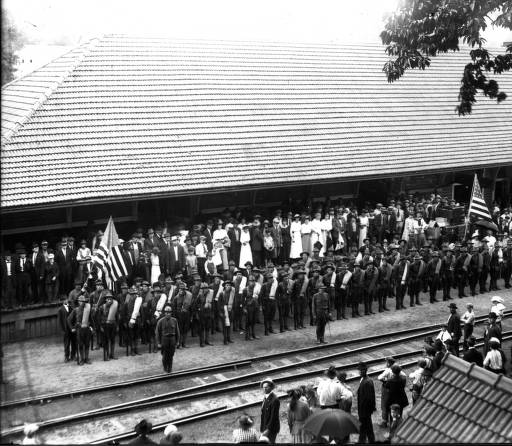
Company H, WWI, 1st North Carolina Infantry of the National Guard, departed Waynesville’s train depot on June 26, 1916. They guarded the Mexican border and returned to Waynesville in February 1917. In July 1917 they then were sent to France during WWI. Courtesy of Haywood County Public Library.
Last Thursday, April 6, 2017, marked the 100th anniversary of the United States’ entry into World War I. Over the next year, many cultural heritage institutions around the country are highlighting the materials they hold related to the “Great War.” We wanted to highlight some of the fantastic local North Carolina materials we have digitized for our partners that document the World War I perspective from North Carolinians’ eyes.
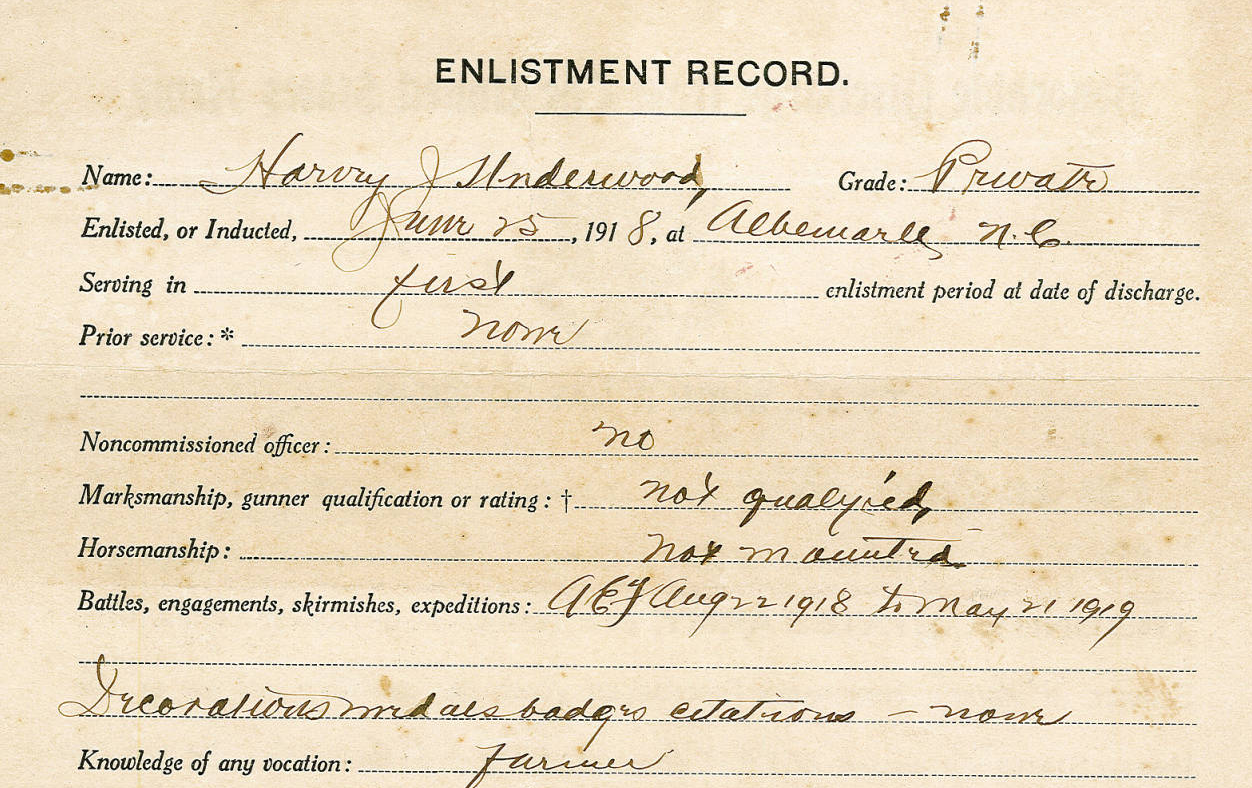

Service records, photographs, news clippings and letters back home from communities across the state are digitized here on DigitalNC. From Wilson County, we have a set of records from 70 men that served in the war that the United Daughters of the Confederacy collected and a scrapbook that includes letters from a Robert Anderson before he was wounded in action and died in France. From Stanly County, we have an enlistment record that includes the amount Harvey Jarvis Underwood was paid to serve, and a history of the service records of Stanly County men who served in the war. From the Grand Lodge of the Ancient, Free, and Accepted Masons of North Carolina, the NCDHC digitized a list of all the North Carolina masons who died in World War I.
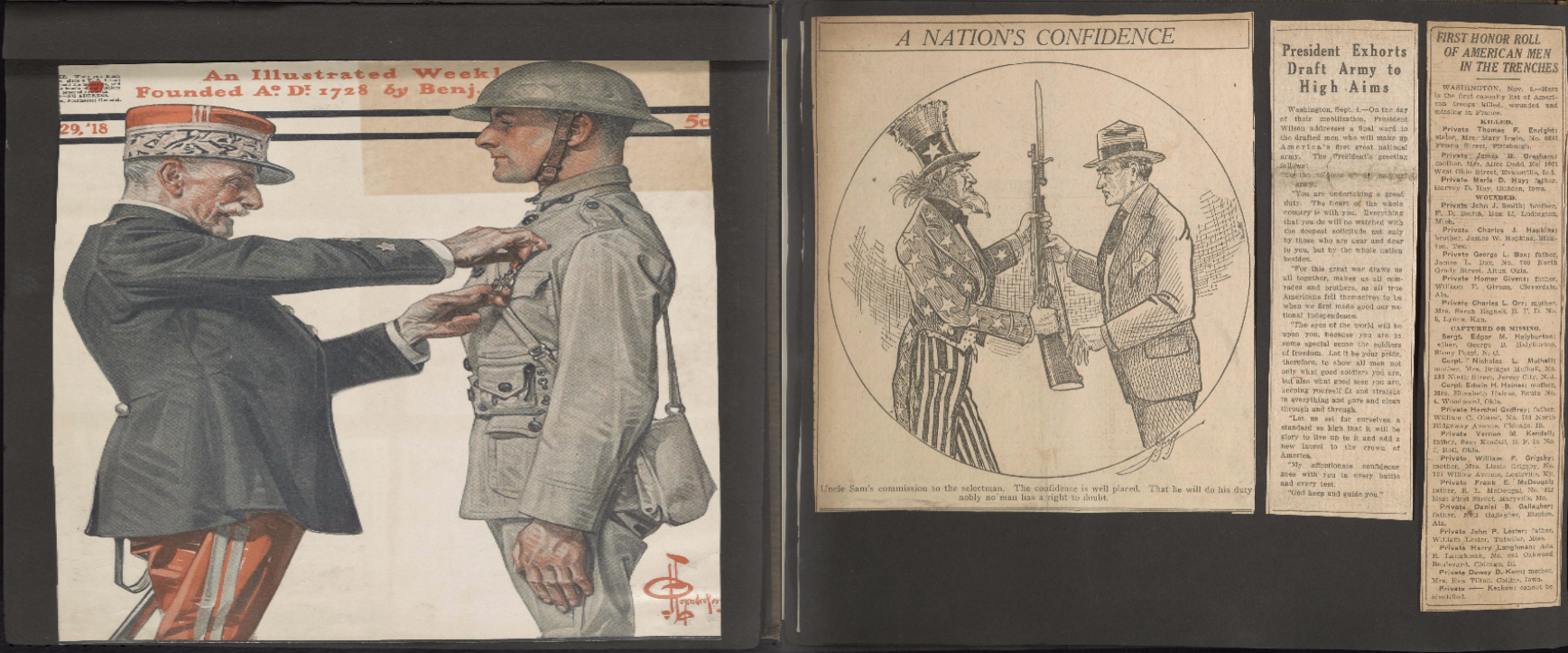
Several scrapbooks from Elon University detail the students’ view of the war as well as what college life during World War I looked like here in North Carolina.
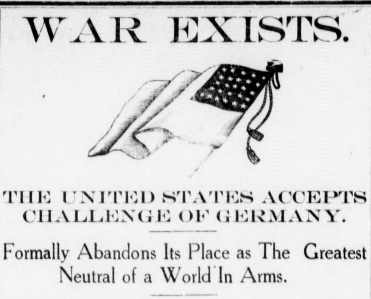
Headline from Page 2 of the April 12, 1917 edition of the Roanoke News
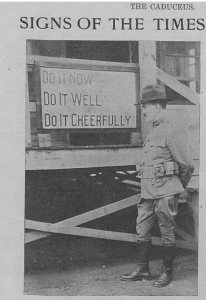
The richest source of information on World War I and North Carolina on DigitalNC may very well be the many local newspapers we’ve digitized that contain the local perspective on the war, including some quite subdued headlines announcing the US’s entry. DigitalNC also hosts several World War I camp and hospital newspapers including the Trench and Camp from Camp Greene and the Caduceus, the paper of the Base Hospital at Camp Greene. Both are from Charlotte Mecklenburg Library.
To view more materials from World War I, check out a search of our collections here. And to learn more about World War I materials from across the state, visit the institutions highlighted in this blog post from our colleagues over at the State Archives of North Carolina.
New materials have been added to the Dr. Francis Joseph Kron Collection, a rich manuscript collection from the Stanly County Museum. Most of the documents pertain to people enslaved by Dr. Kron’s daughters, although he himself is mentioned in a few of them.
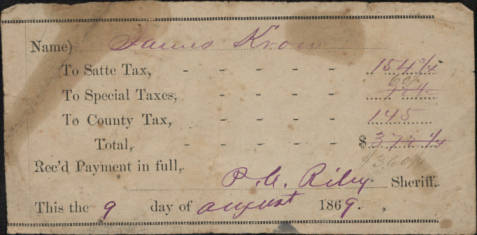
Tax receipt of James Kron, 1869
One of the batches of documents contains tax record receipts. Many of these receipts show the amount of state, county, and poll taxes paid. The other batches, one covering the years between 1855 and 1889, the other from the years 1869 to 1905, are primarily financial documents, although there are some letters of correspondence between family members. There are a number of interesting documents in these collections that lay out the terms of sharecropping agreements.

Detail of signatures on a sharecropping contract between James Kron & Lewis Brutton.
Dr. Francis Joseph Kron was a resident of Montgomery County, and he owned sizable amounts of land both there and in Stanly County. He had a variety of interests and in the course of his life he was a teacher, physician, plantation owner, and horticulturalist. For more information about Dr. Kron, visit the Stanly County Museum’s website. There are more papers from Dr. Kron available on DigitalNC’s website, as well as in the Southern Historical Collection in Wilson Library at UNC-Chapel Hill.
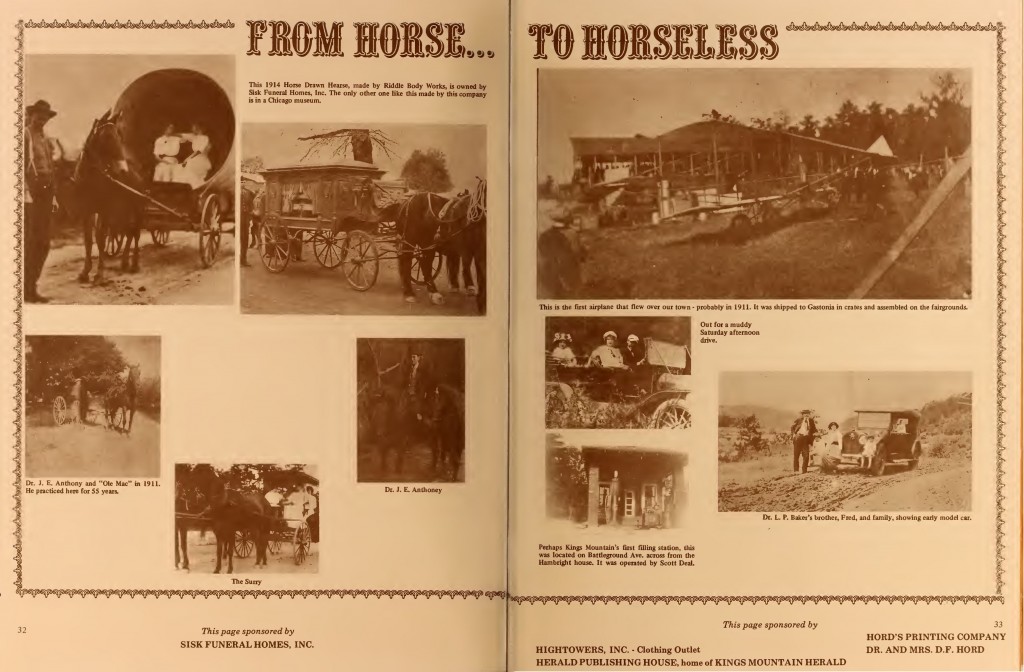
“From Horse to Horseless,” pages 32 and 33 in History and program commemorating the centennial of Kings Mountain 1874-1974.
Recently, we digitized the 1974 Centennial history and program for Kings Mountain, North Carolina, from new contributing institution Mauney Memorial Library. The booklet includes numerous photographs and a detailed history of the town, with each page sponsored by a different local business. Contents also include various programs for events relevant to the centennial celebration.
This addition to DigitalNC.org is just one of many digitized objects available online related to the celebration of a town or organization’s centennial celebration.
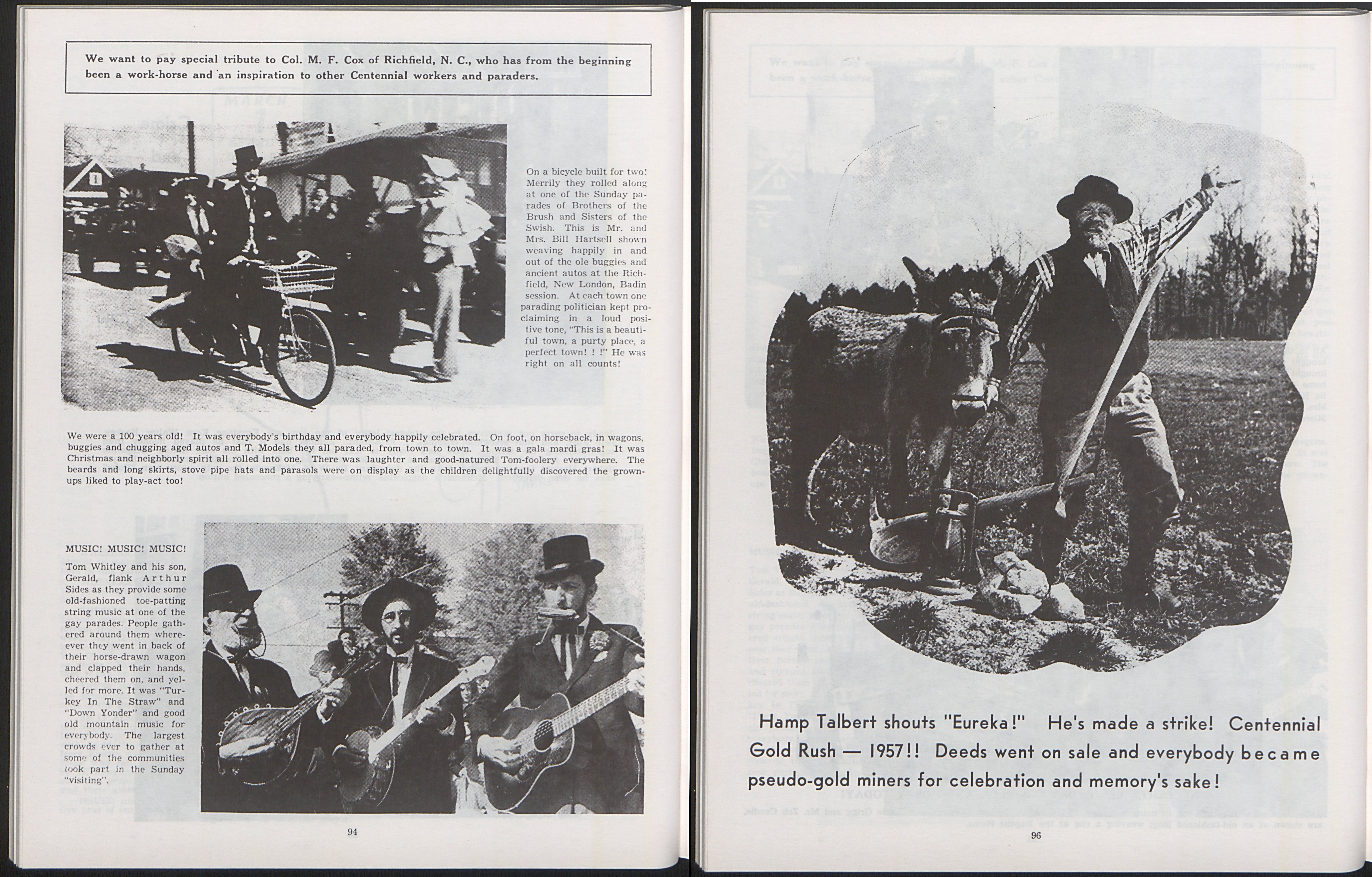
Page 94 and page 96 from the Albemarle, Stanly County Centennial.
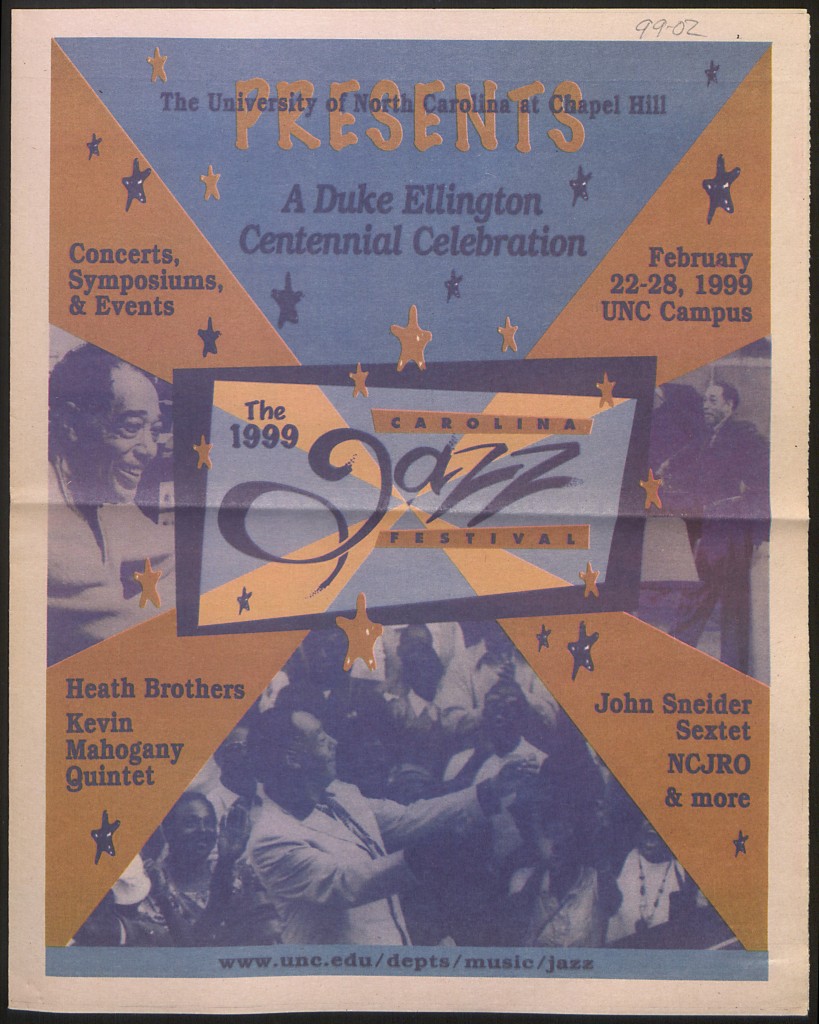
Front Cover of the Duke Ellington Centennial Celebration program
Among these materials is the Albemarle, Stanly County Centennial from 1957. The Bridge from Yesterday–Into Tomorrow is an Albemarle Centennial booklet published by the Albemarle-Stanly County Historic Preservation Commission. The booklet includes poetry, personal accounts from locals, and photographs of Albemarle citizens.
A more recent publication is A Duke Ellington Centennial Celebration from 1999. A Duke Ellington Centennial Celebration is a program generated by “Beyond Category: A Symposium on the Life, Works, and Orchestra of Duke Ellington,” a project made possible via the North Carolina Humanities Council. The symposium occurred on February 22-28, 1999, at the University of North Carolina at Chapel Hill. It included lectures on Jazz and many concerts performed by local and recognized musicians, including Kevin Mahogany and The Heath Brothers.
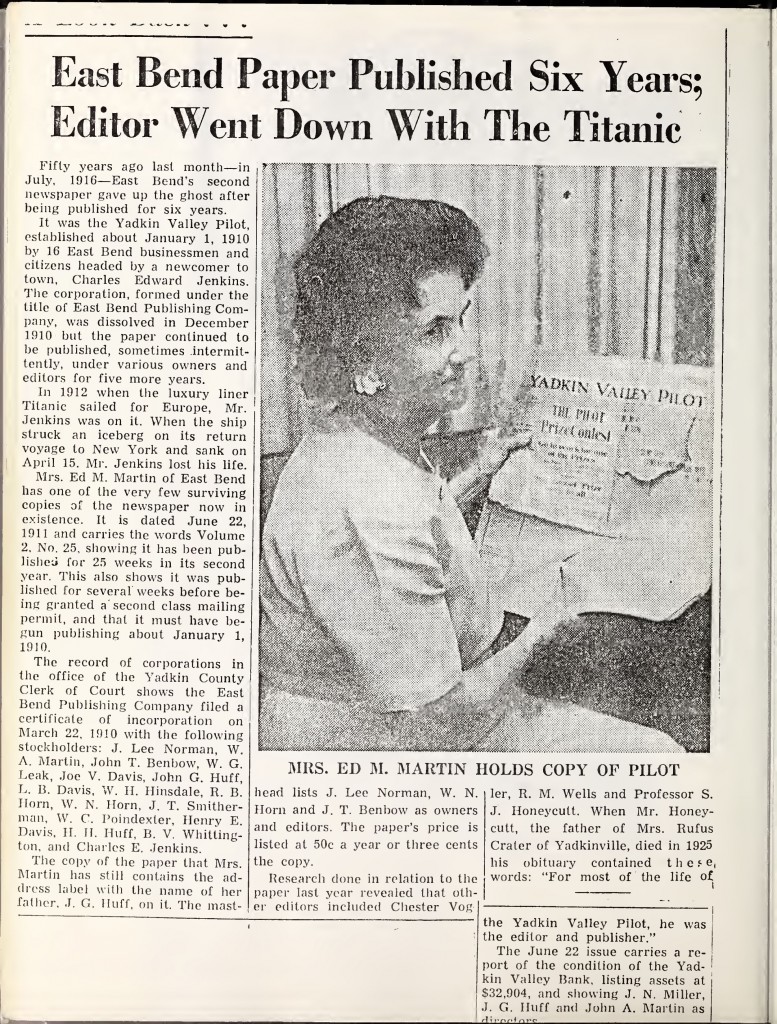
Page 50 of the East Bend Centennial Scrapbook
Another selection is the August 1987 East Bend Centennial Scrapbook, which commemorates the 100 year anniversary of the town of East Bend, which was founded March 7, 1887.
Click here to browse a selection of North Carolina Memory centennial materials.
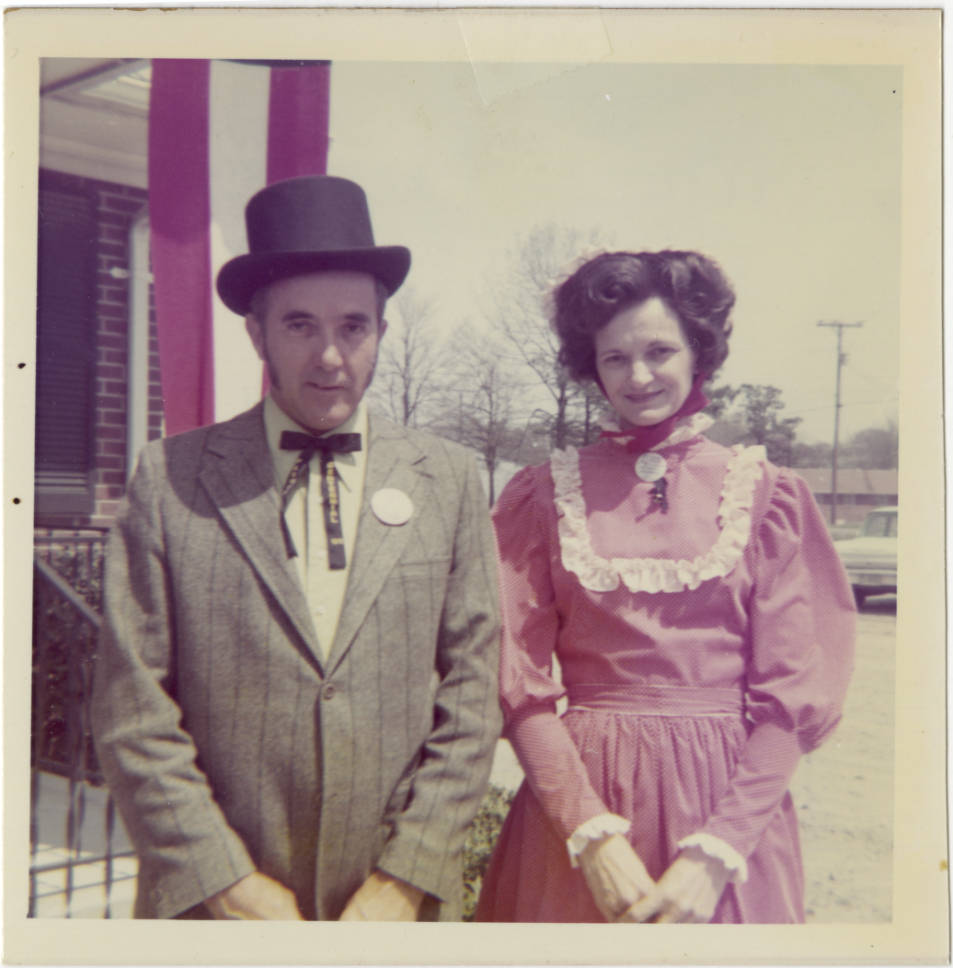
Farmville residents Mark Mozingo and Lottie Mozingo, 1972
In addition to North Carolina Memory, DigitalNC’s Images of North Carolina also contains photographs depicting Centennial Celebrations. The 1972 Farmville Centennial Celebration, for instance, has over 150 photographs documenting the centennial parade and the Farmville residents posing for portraits in period costume. Accompanying the photographs is Farmville’s 100th Anniversary book, which contains a detailed history of the town’s founding as well as accounts of notable residents, organizations, and events.
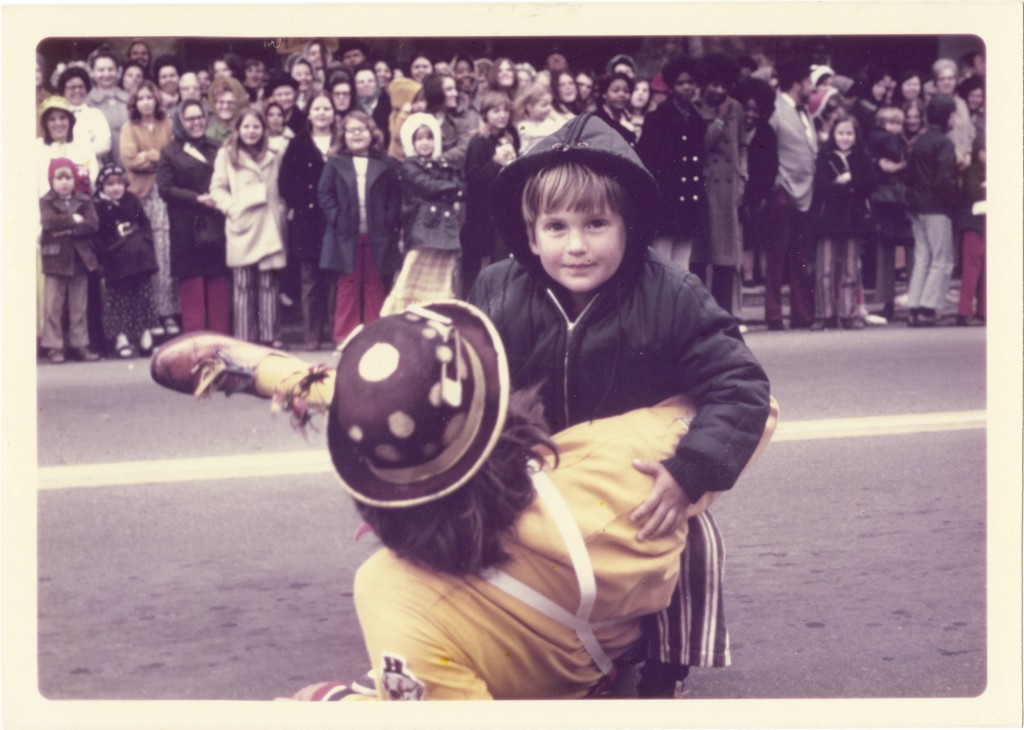
Child Posing with Clown on Main Street, Farmville 1972 Centennial Celebration
You may browse other images from North Carolina centennial celebrations here.
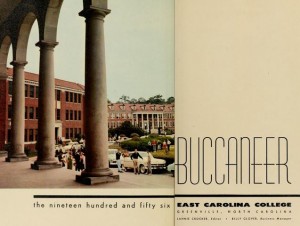
Title page from the 1956 Buccaneer, from East Carolina College, the most popular item on DigitalNC.org in 2014.
The North Carolina Digital Heritage Center had a great year in 2014. We continued to work with partners around the state on digitization projects and added a wide variety of material to DigitalNC.org, making it easier than ever for users to discover and access rare and unique materials from communities all over North Carolina.
As we look back on our work over the past year, I wanted to share some of what we’ve learned by looking at our website usage statistics. Like many libraries, the Digital Heritage Center uses Google Analytics to capture information about what’s being used on our website, who’s using it, and how they got there. While there are still lots of questions remaining about usage of DigitalNC, these stats do give us a lot of valuable information.
In 2014, more than 250,000 users visited DigitalNC.org, resulting in more than 1.8 million pageviews. While people visited our website from computers located all over the world, the greatest number by far came from North Carolina. That’s what we expected and hoped to see. More than 200,000 sessions originated in North Carolina, with the users coming from 388 different locations, ranging from over 18,000 sessions in Raleigh and Charlotte to a single visit from the town of Bolivia in Brunswick County (user location is determined by the location of their internet service provider, so this may not tell us exactly where our users are located, but it’s going to be close in most cases).
What did people use on DigitalNC? We were not surprised to find that the most popular collection remains our still-growing library of yearbooks. The North Carolina Yearbooks collection received more than 125,000 pageviews alone, followed by newspapers (44,000) and city directories (11,000). And we were pleased to learn that at least somebody is reading this blog, which received nearly 2,500 pageviews last year. The most popular blog post was our announcement about the digitization of a large collection of Wake County high school yearbooks.
We were also curious to see what single items were the most popular over the past year. The winner, with 438 pageviews, was the 1956 yearbook from East Carolina University. The second most popular was also from East Carolina, the 1930 Tecoan, followed by the 1961 yearbook from the Palmer Memorial Institute and the 1922 yearbook from Appalachian State University.
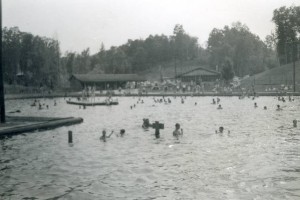
Lake Hideaway, ca. 1950s, the most popular photo on DigitalNC.org in 2014.
The most popular image on our site was from the Davie County Public Library: a black-and-white photo from the 1950s showing swimmers at Lake Hideaway in Mocksville. Other popular photos included a postcard showing the American Tobacco Company plant in Reidsville, N.C., a group of Stanly County students from 1912, and a portrait of Charles McCartney, the infamous “Goat Man” from the 1950s.
The variety of subjects, locations, and time periods in these photos is representative of the wide-ranging content available in North Carolina’s cultural heritage institutions and on DigitalNC.org. We are honored and excited to have a role in making this content accessible to everyone and look forward to sharing even more of North Carolina’s history and culture online in 2015.
The Stanly County Museum and Montgomery County Public Library recently asked us to add some items they digitized to DigitalNC. There are a range of items, from late 18th century business documents in the Forrest Family Manuscript Collection to ledgers from stores in Montgomery County, to this striking panoramic photograph of Lillian Mill.

Here’s a list of the other items. You can also view everything from Stanly County Museum or Montgomery County Public Library.
Fairview Memorial Park Brochure
Forrest Family Manuscript Collection
Norwood Elementary School Signature Book of Ronnie Melton
Images
East Main Street, Albemarle, NC
Farmers and Planters Hotel, South Third Street, Albemarle, NC
John Odom Ross
Panoramic View of Lillian Mill and Group Portrait
Stanly County Public Library
Sid Austin House
Miller Family Bible Page
Ledgers
John B. and H. Martin’s Rocky Springs Store Ledger or Day Book
Blacksmith’s Ledger
Ledger of a Store on the Little River, Montgomery County, NC [1829-1830]
Ledger of a Store on the Little River, Montgomery County, NC [1831-1838]
Stanly County School Ledger for District 47
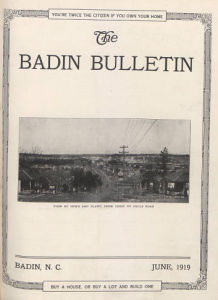 We’ve recently completed digitization of issues of the Badin Bulletin from 1918-1920, from the collections of the Stanly County Museum, which give a interesting glimpse into life in a factory town in the early 20th century.
We’ve recently completed digitization of issues of the Badin Bulletin from 1918-1920, from the collections of the Stanly County Museum, which give a interesting glimpse into life in a factory town in the early 20th century.
The town of Badin was formed in 1913 by a French aluminum company to house workers for a large plant being built on Yadkin-Pee Dee River. The outbreak of World War I derailed the French effort and the plant was purchased by the Aluminum Company of America (ALCOA). Although the town retained some of its original French influence, the collection of small houses grouped near the factory resembled the textile mill villages that were then prevalent throughout Piedmont North Carolina.
When the United States entered the World War, local demand for aluminum was high. As the factory expanded, so did the town. The Badin Bulletin documents civic and social life in the community from 1918-1920. It’s definitely a company paper — there are no stories about labor unrest or worker dissatisfaction — but it still provides an interesting look at the lives and activities of the workers. Much of the paper is devoted to news of the employees and their families, especially marriages, births, and deaths. There is a lengthy social column noting the visits and illnesses among the community and most issues are interspersed with patriotic articles and features about the factory itself.
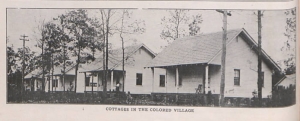 Most issues also include news from the local African American community. Like much of the South during this time, Badin was strictly segregated by race. The editors of the Badin Bulletin presented stories about the local “Colored Village” as if it were a source of pride for the company. Several issues include photos of houses and public buildings in the African American section. This may have been part of an effort to attract more African American workers to the factory.
Most issues also include news from the local African American community. Like much of the South during this time, Badin was strictly segregated by race. The editors of the Badin Bulletin presented stories about the local “Colored Village” as if it were a source of pride for the company. Several issues include photos of houses and public buildings in the African American section. This may have been part of an effort to attract more African American workers to the factory.
Badin remained a small community closely tied to the aluminum plant until 2010, when Alcoa announced that the factory would be closed and the property redeveloped for future industrial use. Badin celebrated its Centennial earlier this year.



















